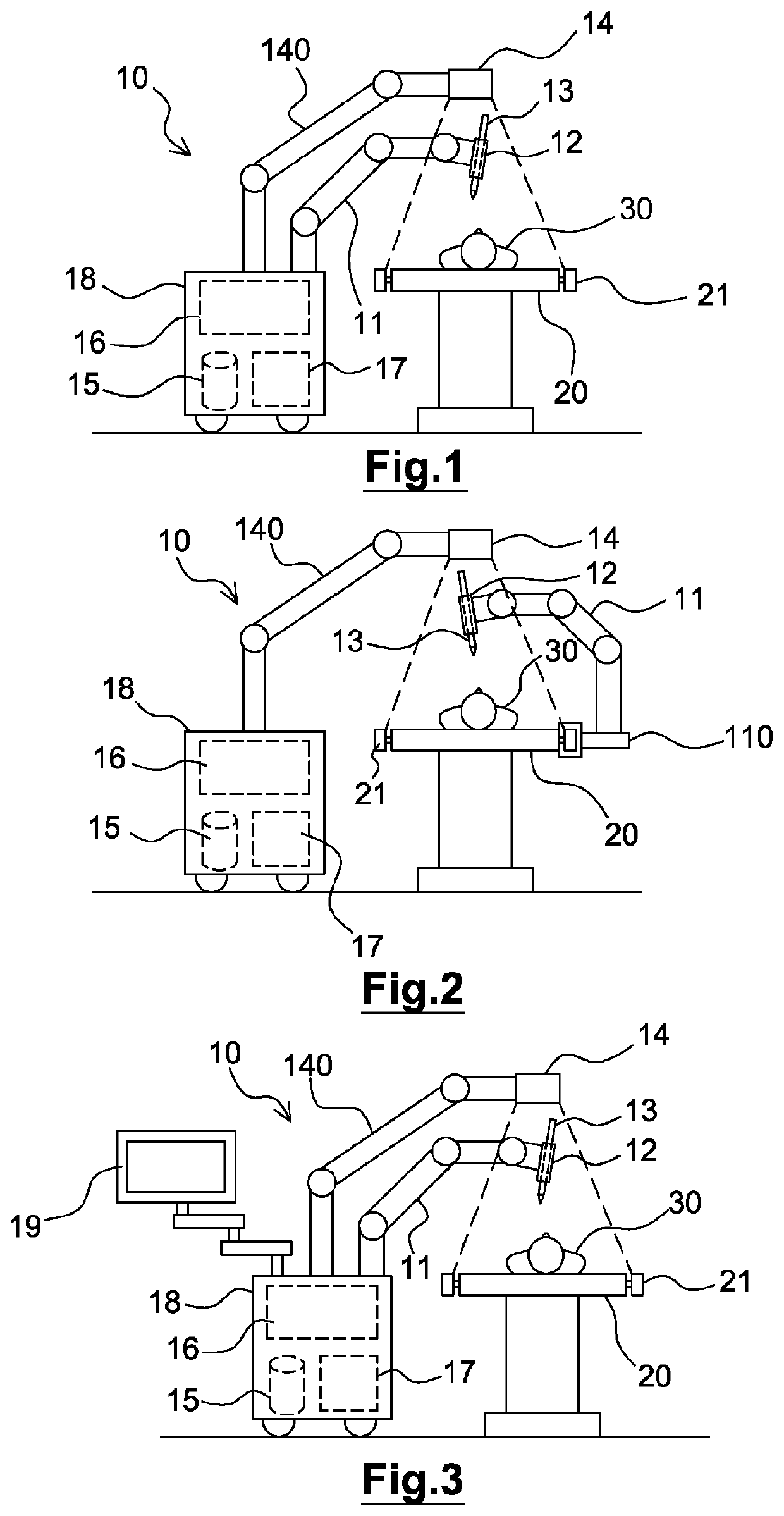Robotic device for a minimally invasive medical intervention on soft tissues
a robotic device and soft tissue technology, applied in the field of medical interventions, can solve the problems of avoiding sensitive anatomical structures, requiring a specific and restricting environment, and complicated procedures
- Summary
- Abstract
- Description
- Claims
- Application Information
AI Technical Summary
Benefits of technology
Problems solved by technology
Method used
Image
Examples
Embodiment Construction
[0056]FIG. 1 shows schematically an embodiment of a robotic device 10 for assisting an operator in a medical intervention, for example a minimally invasive intervention on soft tissues.
[0057]As is illustrated in FIG. 1, the robotic device 10 has a robot arm 11 with several degrees of freedom. The robot arm 11 has an end suitable for receiving a medical instrument 13. In the example shown in FIG. 1, the medical instrument 13 is mounted on the end of the robot arm 11 by way of a guide tool 12 suitable for guiding said medical instrument 13. For this purpose, the robot arm 11 has, at said end, an interface suitable for receiving said guide tool 12.
[0058]The robot arm 11 preferably has at least 6 degrees of freedom in order to permit wide ranges for spatially monitoring the position and orientation of the guide tool 12 with respect to a patient 30, who is lying on an operating table 20 for example.
[0059]The guide tool 12 is suitable for guiding the medical instrument 13, that is to for ...
PUM
 Login to View More
Login to View More Abstract
Description
Claims
Application Information
 Login to View More
Login to View More - R&D
- Intellectual Property
- Life Sciences
- Materials
- Tech Scout
- Unparalleled Data Quality
- Higher Quality Content
- 60% Fewer Hallucinations
Browse by: Latest US Patents, China's latest patents, Technical Efficacy Thesaurus, Application Domain, Technology Topic, Popular Technical Reports.
© 2025 PatSnap. All rights reserved.Legal|Privacy policy|Modern Slavery Act Transparency Statement|Sitemap|About US| Contact US: help@patsnap.com

